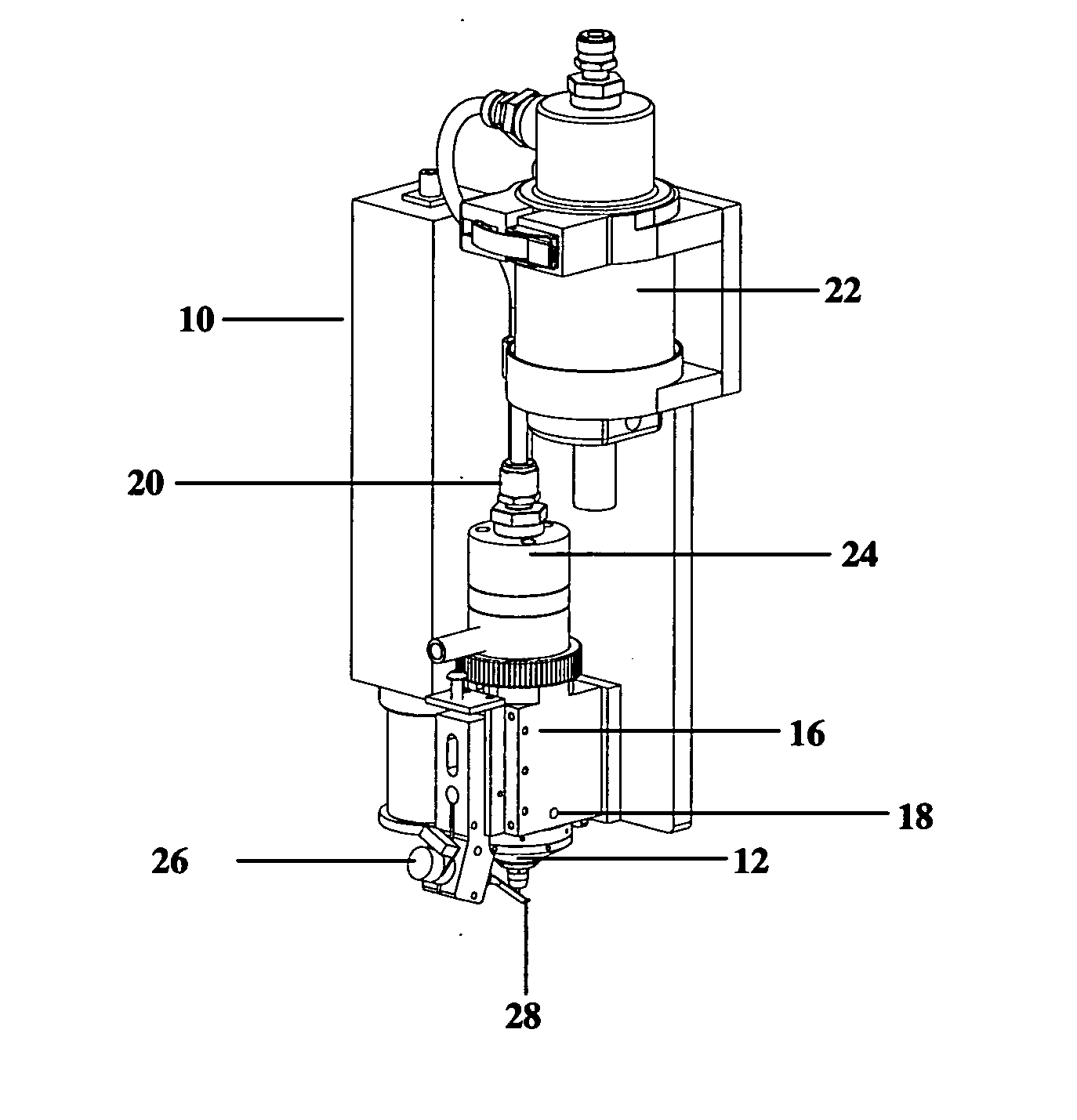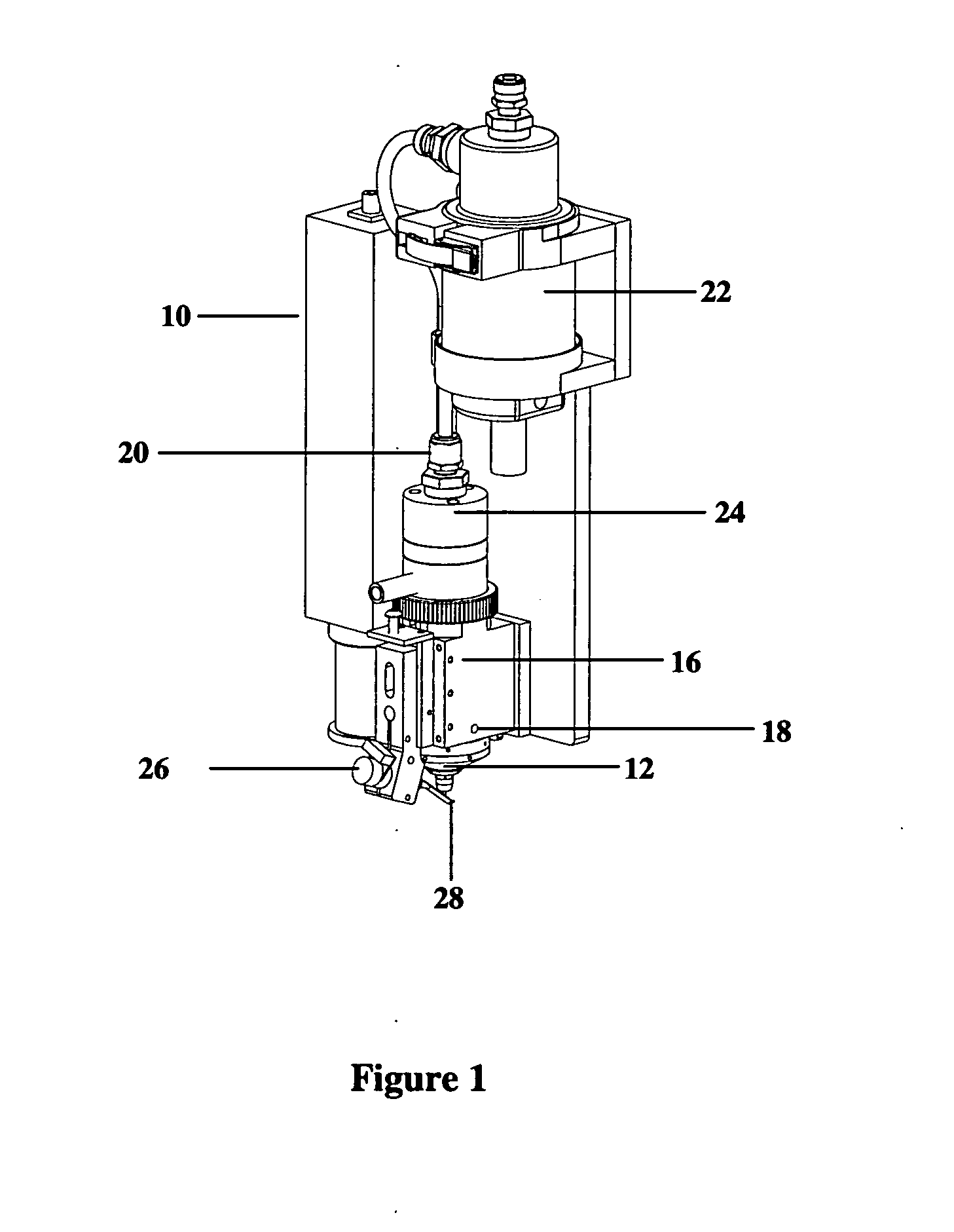Laser processing for heat-sensitive mesoscale deposition of oxygen-sensitive materials
a mesoscale and material processing technology, applied in the direction of resistive material coating, printing, nuclear engineering, etc., can solve the problems of low metal yield of precursor inks, limited thick film and thin film techniques, and well developed thick film and thin film processes for electronic structures deposition
- Summary
- Abstract
- Description
- Claims
- Application Information
AI Technical Summary
Benefits of technology
Problems solved by technology
Method used
Image
Examples
example 2
Laser Sintering of Particle Suspensions and Commercial Pastes and Inks
[0068] Laser sintering of particle suspensions on heat-sensitive targets is also possible with the present invention. In the sintering process, a solid, bonded mass is created without melting individual particles. The M3D™ process is capable of selective sintering of a two-component paste consisting of low and high-melting temperature particles such as low-melting point glass and metal, dielectric, resistive, or ferromagnetic materials.
[0069] Laser processing may be used to sinter commercial resistor and conductor pastes, and may also be used to sinter pastes for other electronic materials such as dielectrics and ferromagnetics. In the M3D™ deposition process, commercial pastes—which typically have viscosities of 100,000 centipoise or greater—are preferably diluted in a suitable solvent and pneumatically aerosolized for deposition. Laser sintering of M3D™-deposited commercial inks can also be accomplished on pla...
example 3
Laser Sintering of M3D™-Deposited Nanoparticle Inks
[0070] Laser sintering of M3D™-deposited nanoparticle inks has also been used to form metal lines on heat-sensitive targets. The laser-sintered nanoparticle deposits preferably exhibit resistivities near that of the bulk metal. Laser sintering of M3D™-deposited nanoparticles to near bulk resistivities can be accomplished with 100 mW or less of visible or ultraviolet laser radiation. Infrared laser radiation may also be used for laser sintering of nanoparticles, given that the absorption of the ink is tailored to the wavelength of the laser.
[0071] The nanoparticle ink is preferably deposited in a fluid form, so that particle suspension is maintained, and the laser is then preferably scanned over the deposit to sinter individual particles. Simultaneous deposition and sintering of the nanoparticle ink may be performed to deposit lines with greater thickness than lines deposited using a serial deposition and decomposition process. Sim...
example 4
TFT Fabrication on Plastics and Glass
[0072] In one embodiment, the present invention has been used to fabricate thin film transistors on plastic targets, with damage thresholds of approximately 100 to 150° C. Specifically, the invention can be used for solution-based fabrication of organic thin film transistors (OTFT's) on flexible targets such as PET (polyethylene terephthalate), PEN, polycarbonate, polyetheretherketone (PEEK), and polyester. The application of the M3D™ process to fabricate OTFT's can also be extended to glass targets. The process can deposit and process the organic semiconductor as well as the metallization required for OTFT fabrication. The present invention can also be used to deposit the source and drain electrodes, the gate electrode, and the gate insulator. Channel lengths as small as approximately 4 microns can be formed. The ratio of the channel width to channel length is preferably held to 10 or greater, to reduce the occurrence of fringe effects. Other c...
PUM
| Property | Measurement | Unit |
|---|---|---|
| damage threshold temperature | aaaaa | aaaaa |
| diameter | aaaaa | aaaaa |
| feature size | aaaaa | aaaaa |
Abstract
Description
Claims
Application Information
 Login to View More
Login to View More - R&D
- Intellectual Property
- Life Sciences
- Materials
- Tech Scout
- Unparalleled Data Quality
- Higher Quality Content
- 60% Fewer Hallucinations
Browse by: Latest US Patents, China's latest patents, Technical Efficacy Thesaurus, Application Domain, Technology Topic, Popular Technical Reports.
© 2025 PatSnap. All rights reserved.Legal|Privacy policy|Modern Slavery Act Transparency Statement|Sitemap|About US| Contact US: help@patsnap.com



